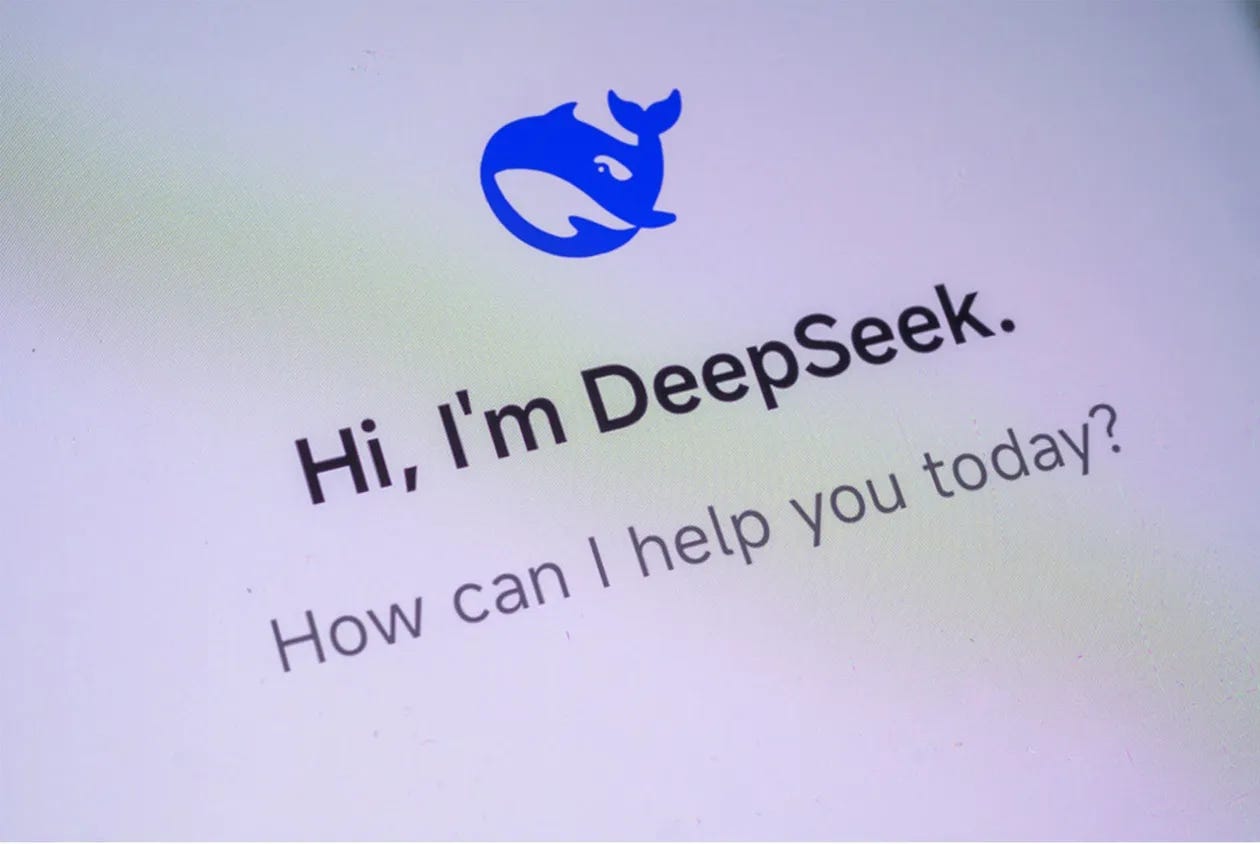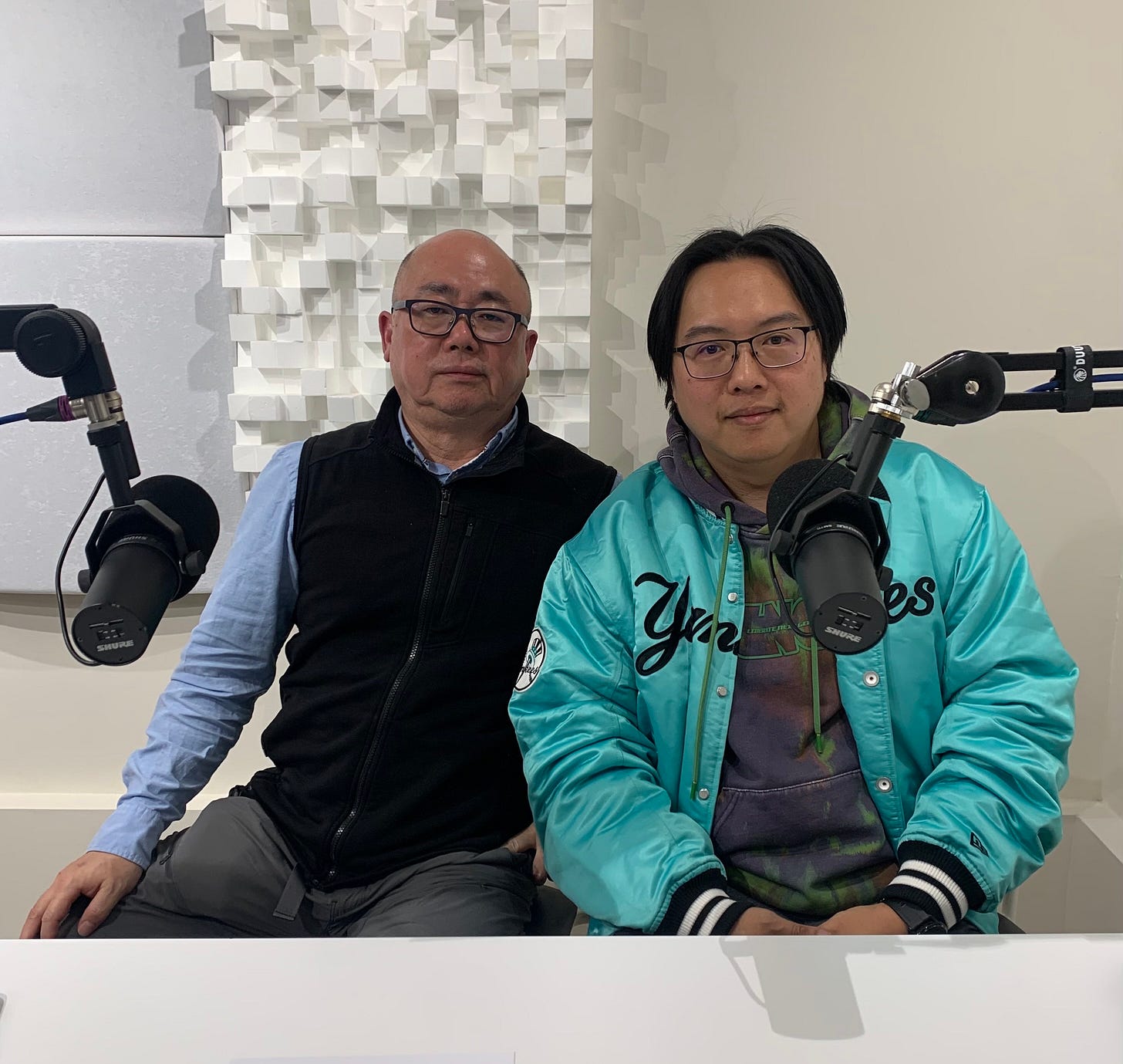Interview with Richard Lin: Unveiling China's AI Frontline from the Rise of DeepSeek
Liang-rong Chen
Photo: Shutterstock
In this episode, let’s continue exploring the impact of DeepSeek on the tech industry from three different angles.
Impact on the AI hardware industry – This is the biggest concern for Taiwan’s electronics sector. Already discussed in our previous newsletter.
China’s AI Threat – Despite strict semiconductor sanctions, China has managed to catch up. What does this mean for the future?
The Future of AI – If open-source models like DeepSeek become the mainstream, what changes will this bring to AI’s future?
For the last two topics, we are fortunate to have an insider’s perspective from Richard Lin(林旅強), a Taiwanese expert with working experience in a major Chinese AI company. Lin is the co-founder of Open Source Community and the former Head of Open Source and Developer Relations at 01.AI (零一萬物)
From Huawei to China’s “AI Six Tigers” – Richard Lin’s Firsthand Observations
01.AI, founded by Kai-Fu Lee, CEO of Sinovation Ventures, is one of China's "AI Six Tigers," alongside Zhipu AI (智譜AI), MiniMax, Baichuan AI(百川智能), Moonshot AI(北京月之暗面), and StepFun(階躍星辰). Among them, 01.AI is arguably the most well-known internationally, with its large model Yi-34B once ranking No. 1 on Hugging Face’s global open-source pre-trained model leaderboard.
Richard has a unique vantage point on China’s AI development. After graduating from National Chengchi University’s Law Department, he entered the open-source community through Academia Sinica’s Open Source Software Foundry (OSSF) project. 5 years later, he moved to China at the invitation of the startup GitCafe and later joined Huawei, where he worked on open-source and developer ecosystems.
Taiwan’s industry is relatively unfamiliar with the open-source model, which involves making source code publicly available to avoid redundant efforts in software development. According to Lin, In the open-source community, “there’s no such thing as plagiarism—only inspiration.” Everyone evolves together at a fast pace.
Two years ago, Richard was given the task to be in charge of the open-source community of its Pangu large model. He later joined 01.AI but recently left due to strategic shifts in its open-source approach.
From his perspective, DeepSeek is an “outlier” that is reshaping industry dynamics and bringing structural changes to AI. Below is an excerpt from my conversation with Lin. The full interview is available on this week’s podcast.
Photo: Liang-rong Chen (left) and Richard Lin (right).
Q: People following China’s tech industry often hear about the “AI Six Tigers,” as well as the big three—Alibaba, Baidu, and ByteDance. Yet DeepSeek R1 suddenly emerged, surpassing LLaMA and reaching the same level as OpenAI’s GPT-4o. This took me by surprise. Were you also caught off guard by this?
Lin: Not really. Last year, when I spoke publicly about China’s open-source large models, I consistently mentioned three key players: Alibaba’s Tongyi Qianwen(通義千問), 01.AI , and DeepSeek.
DeepSeek is indeed an anomaly. The “AI Six Tigers” refer to unicorn startups valued at over $1 billion, and their valuations are driven by external fundraising. No fundraising means no valuation ranking. DeepSeek’s parent company, High-Flyer(幻方), made a fortune using AI algorithms for quantitative trading. It then pivoted toward Artificial General Intelligence (AGI), bypassing the need for fundraising and, consequently, the "Six Tigers" ranking.
(Since DeepSeek isn’t financially constrained), its early research papers stood out for their quality, openness, and focus on technological innovation. In contrast, R&D teams at large companies like Alibaba and Baidu often struggle with long-term research commitments, as they frequently need to pivot midway.
Q: The biggest mystery for many is how these Chinese companies continue to excel despite being unable to buy high-end GPUs. You mentioned that not just DeepSeek, but also Alibaba and 01.AI are performing well. How are these teams achieving such results without access to cutting-edge GPUs?
Lin: DeepSeek has shared details on how it maximizes GPU capabilities through technical optimizations. Chinese companies, when faced with challenges, often become more creative in finding workarounds—just like Taiwan’s tech industry.
Additionally, some major companies, such as Alibaba and ByteDance, have their own cloud services, like ByteDance’s Volcengine (火山引擎). This means they might still have a decent stockpile of GPUs. Even if internal teams must share limited resources, they find ways to optimize usage.
Finally, in the past, some Chinese companies have considered renting overseas data centers to bypass chip sanctions.
Q: As a veteran in the open-source space, how do you see OpenAI’s response? After worldwide attention on DeepSeek, Sam Altman recently said, “We might be on the wrong side of history and need to rethink our open-source strategy.” If even the strongest proprietary AI company is considering a shift, does this mean open-source will become the dominant approach? Has the industry’s direction changed?
Lin: The tide is definitely shifting. Two weeks ago, I attended an open-source conference in Europe, where attendees were excited, saying, We should thank DeepSeek. It has brought open-source back into mainstream discussions in The New York Times and The Financial Times—something that hasn’t happened in nearly 20 years, since the Red Hat era.
That said, the strength of a model isn’t directly caused by whether it’s open-source or proprietary. A model is as powerful as the effort put into its development. If the creators decide to open-source it, that’s a separate decision.
However, if two models are equally strong, one open-source and one proprietary, users will naturally prefer the open-source option. Once an open-source model surpasses a proprietary one, the latter becomes obsolete. This is the real disruptive power of open-source.
Today, nearly no one will pay attention to a model weaker than DeepSeek. DeepSeek has already set a new benchmark—anything below it is no longer viable.
Q: Where does the AI ecosystem go from here? If open-source becomes mainstream, does this create new opportunities for Taiwan?
Lin: There are two layers to this.
The race to build the world’s most powerful language models will remain limited to a handful of companies because it requires massive investment—not every company can afford it.
Other companies may not focus on having the biggest models. Although they are capable of data collection, annotation, and pre-training, they choose to target specific customers or applications. They don’t need the strongest models to be profitable. This could lead to a new business model.
By next year, even models with just 2 billion parameters might be capable of handling many tasks, accelerating real-world AI applications. These smaller models could even run on smartphone chips, leading to a flourishing ecosystem of AI applications.
Q: AI-powered smartphones are a hot topic now. As AI models become more advanced, they can run directly on mobile devices. What opportunities does this present for Taiwan?
Lin: If computing power shifts more to edge devices, allowing more hardware to run AI models, Taiwan’s manufacturers should take note—this could be their next big opportunity.
NVIDIA is also developing large models now because once large models become like an operating system, developers can build applications on top of them. This would position NVIDIA to become the next Microsoft, Apple, or Google.
In the past, chip companies couldn’t achieve this because operating systems controlled both developers and applications. With open-source AI, the industry landscape is changing. In the future, large models could function as operating systems, bringing together developers and users in new ways.
This transformation is likely to happen within the next 5 to 10 years. The question is whether we can keep up with this wave.
Read more here:
Daily News Digest: DeepSeek Proved Open Source Outpaces Proprietary Models, Meta's AI Chief Says





